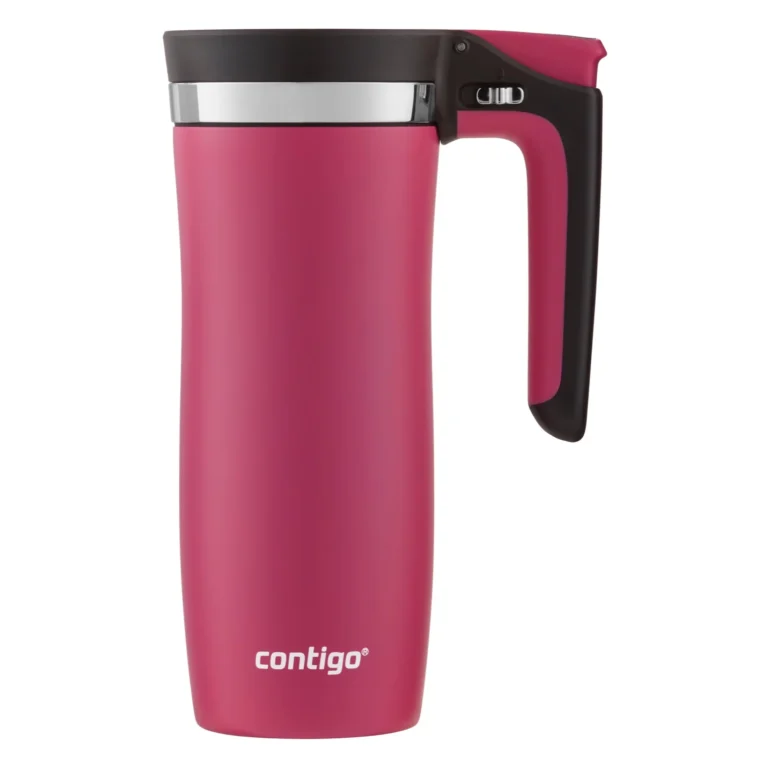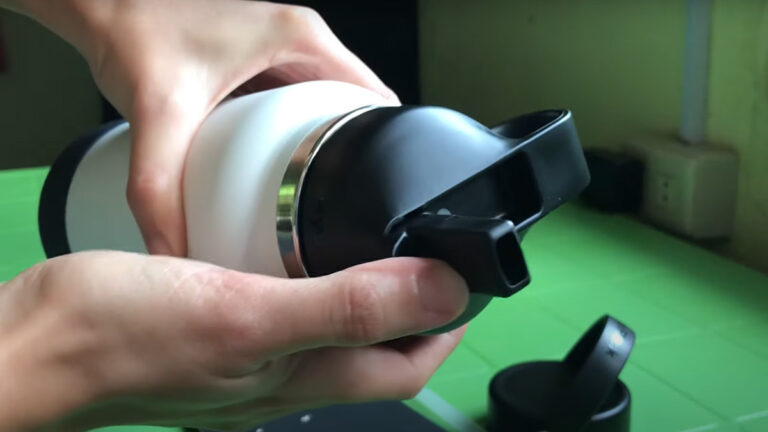Spring has sprung, and that means it’s time for runners to swap out their winter gear for shorts, tank tops, and most importantly, hydration solutions. Whether you’re a seasoned racer or a leisurely jogger, carrying water while running is essential for keeping your body in peak condition. But with so many options available, it can be challenging to know which to choose. In this post, we’ll focus on one of the most popular and comfortable solutions: handheld water bottles. So put on your running shoes, it’s time to cover how to hold a water bottle while running!
Importance of hydration during running
Staying hydrated during running is essential for optimal performance and overall health. Dehydration can lead to muscle cramps, heat exhaustion, and even more serious conditions such as heatstroke. Therefore, it is important to drink sufficient water before, during, and after your run. How much water you need during running depends on several factors such as the weather conditions, distance, and intensity of your run. Generally, you should aim to drink 4-6 ounces of water every 20 minutes during a run to stay hydrated.
Carrying water while running can be challenging, but there are several options to choose from such as hand-held bottles, hydration belts, and hydration packs. Each option has its benefits and drawbacks, so it is important to find the right one that suits your needs and preferences. It is also important to note that drinking too much water during a run can be just as harmful as not drinking enough. Always listen to your body and drink water when you feel thirsty. By staying hydrated, you can optimize your running performance and stay safe during your workouts.
1. Hand-Held Running Bottles
Price range, amount of water, and comfort level
When it comes to carrying water while running, there are various options available with different price ranges, capacities, and comfort levels. Here’s what you need to know:
– Hand-held running bottles: These are a popular option as they are easy to carry, offer quick access to water, and range in price from around $10 to $40. They come in sizes ranging from 12 to 24 ounces and may have extra pockets for storing small items. However, they can be cumbersome to carry for longer distances and may cause hand fatigue.
– Soft flasks: These are a newer option that offer more flexibility and are more comfortable to carry than traditional hard bottles. They come in sizes ranging from 16 to 20 ounces and are usually priced between $20 and $40. They also offer extra storage pockets and can be used with hydration vests or belts.
– Hydration belts: These offer a hands-free option for carrying water and come in different sizes and capacities. They can cost anywhere from $20 to $100 and have multiple pockets for storing small items. However, they may bounce and cause discomfort if not properly adjusted.
Ultimately, the choice of how to carry water while running comes down to personal preference and comfort level. It’s important to experiment with different options to find what works best for you.
Finding the right fit and capacity
When it comes to finding the right fit and capacity for a water bottle while running, there are a few things to consider. This can ultimately affect your overall comfort and hydration levels while on the go. Here are a few pointers to keep in mind:
– Capacity: The amount of water you’ll need to carry depends on the duration of your run and your personal needs. Typically, smaller bottles ranging from 12-16 ounces are best for shorter runs, while bottles ranging from 17-24 ounces are better for longer distances.
– Fit: It’s important to choose a bottle that fits comfortably in your hand and won’t slip out or cause chafing. Look for bottles with adjustable straps or handles that mold to your hand for a secure grip.
– Weight: Keep in mind that the larger the capacity, the heavier the bottle. Consider your own personal strength and endurance before choosing a bottle that might be too heavy for you to comfortably carry.
– Personal preference: Some runners prefer handheld bottles, while others prefer running belts or soft flasks. Testing out different types and styles will help you find the right fit and capacity for you.
Benefits of hand-held running bottles
Hand-held running bottles offer many benefits for runners who want to stay hydrated during their workouts. Here are some of the top advantages of using a hand-held running bottle:
1. Convenience: With a hand-held bottle, you can easily carry water with you wherever you go, without having to stop at water fountains or carry a bulky hydration pack. This makes it easier to stay hydrated during long runs or races.
2. Comfort: Many hand-held running bottles are designed to fit comfortably in your hand, with soft, ergonomic grips that help reduce fatigue and prevent chafing. Some bottles even feature adjustable straps or pockets where you can store energy gels or other essentials.
3. Customization: Hand-held running bottles come in a variety of sizes and styles, so you can choose the one that best fits your needs and preferences. Some bottles hold as much as 20 ounces of water, while others are smaller and more lightweight.
4. Hydration tracking: Many hand-held running bottles come with convenient markers or scales to help you track your water intake and stay on top of your hydration needs during your run.
Overall, hand-held running bottles are a convenient, comfortable, and customizable way to stay hydrated during your runs. Whether you’re training for a marathon or just trying to stay in shape, investing in a high-quality hand-held running bottle can help you perform your best.
Drawbacks of using bottles
While hand-held running bottles may be a convenient way to carry water during your runs, there are some significant drawbacks that you should consider. Here are some of the main disadvantages of using bottles for running hydration:
1. Added weight: Even small water bottles can add a significant amount of weight to your run, and larger bottles can be even more cumbersome. Running with extra weight can alter your form and put unnecessary strain on your muscles, which can lead to fatigue and injury.
2. Arm fatigue: Holding a bottle in your hand for an extended period can cause your arms to become tired and sore, which can also affect your form. Running with a bottle in only one hand can cause an imbalance in your gait, leading to discomfort and even injury.
3. Limited capacity: Depending on the size of your bottle, you may not be able to carry enough water to keep you hydrated throughout your run. This can be especially problematic on longer runs where you may not have access to refilling stations or other sources of hydration.
4. Tripping hazard: Carrying a bottle while running can be a tripping hazard, both for you and for other runners around you. Additionally, if you drop your bottle or accidentally hit someone with it, it could cause injury.
Overall, while hand-held running bottles can be a good option for short runs or races, they may not be the best choice for longer distances or for runners who prefer to keep their hands free. Before choosing your hydration method, consider your personal comfort, the distance you’ll be running, and the availability of water sources along your route.
Examples of popular hand-held running bottles
When it comes to hand-held running bottles, there are a plethora of options available in the market. Here are some examples of popular hand-held running bottles that runners swear by:
1. Nathan SpeedMax Plus Flask – This bottle boasts an ergonomic design and a tight-fitting strap that takes the strain off your hand while still keeping your bottle secure. The flask’s cap also has a locking mechanism to prevent leaks and spills.
2. CamelBak Quick Grip Chill – With its easy-to-use twist-open nozzle and insulated bottle, this is a go-to for runners who prefer colder water on their runs. The bottle is also removable from the strap, giving it versatility beyond just running.
3. Nathan SpeedShot Plus – Meant for shorter runs, this bottle has a smaller capacity and is lightly insulated for ease of use. It also has a pocket that can fit most smartphones.
4. Ultimate Direction Handy 20 – With a larger 20-ounce capacity and adjustable straps, this bottle is perfect for longer runs. The stretch mesh pocket can also hold other essentials like keys and gels.
As mentioned earlier, the key to finding the right hand-held running bottle for you is to try out different options and see what works. So why not give one or two of these bottles a try on your next run?
2 . Hand-Held Soft Flasks
Price range, amount of water, and comfort level
When it comes to carrying water while running, hand-held bottles and soft flasks are popular choices. Here are some factors to consider when choosing between the two options:
Price Range:
– Hand-held running bottles are generally cheaper than soft flasks.
– Soft flasks often have a higher initial cost.
Amount of Water:
– Hand-held running bottles can hold anywhere from 10oz to 24oz of water.
– Soft flasks typically hold a smaller amount of water.
Comfort Level:
– Both hand-held running bottles and soft flasks can be comfortable to hold.
– Soft flasks are flexible and can mold to your hand, while hand-held running bottles may tire out your arms on longer runs.
Overall, the choice between hand-held running bottles and soft flasks comes down to personal preferences for price, amount of water, and comfort level. Regardless of which option you choose, it’s important to make sure you stay hydrated while running to improve your performance and prevent dehydration.
Finding the right fit and capacity
When comes to finding the right water bottle for running, there are a few key factors to consider in terms of fit and capacity. Here are some things to keep in mind:
– Handheld water bottles come in a variety of sizes, ranging from 10-24 ounces. For shorter runs, a smaller bottle may suffice, while longer runs may require a larger capacity.
– Consider the shape and design of the bottle, as this can impact how comfortable it is to hold while running. Some bottles come in a more traditional shape, while others are more palm-shaped or contoured to fit the hand.
– Be mindful of the weight of the bottle, as this can become a factor over longer distances. A lighter bottle may be more comfortable to carry for extended periods of time.
– For those who prefer not to carry a bottle in their hands, waist belts with water bottle holders are another option. Look for a belt with a capacity that meets your distance needs, and with additional storage features for keys, gels, or other small items.
Ultimately, finding the right fit and capacity for your water bottle is a matter of personal preference and trial and error. Experiment with different sizes and shapes to find the one that works best for you.
Benefits of using soft flasks
Using soft flasks when running has become increasingly popular among runners in recent years. Not only are soft flasks affordable, but they also offer a range of benefits which make them a worthwhile investment.
Here are some of the benefits of using soft flasks for carrying water when running:
1. Lightweight and compact: Unlike traditional water bottles, soft flasks are collapsible and lightweight, making them easy to carry without weighing you down.
2. Easy to use: Soft flasks feature a flexible straw or nozzle that allows runners to easily drink water without the need to stop or take off their backpack.
3. Versatile: Soft flasks come in a range of sizes and are designed to fit into a variety of hydration vests and backpacks. They also come with different capacities, so runners can choose the amount of water that suits their particular needs.
4. No sloshing: Soft flasks collapse as you drink, reducing the amount of air inside and minimizing sloshing noise.
5. Monitor water levels: Most soft flasks are transparent, enabling runners to see the water levels and know when they need to refill them.
Overall, soft flasks are a practical and effective way to carry water when running, providing a variety of benefits that make them a must-have accessory for runners who want to stay hydrated on the go.
Drawbacks of using soft flasks
While soft flasks have their advantages, there are also some drawbacks that runners should be aware of. These include:
1. Durability: Soft flasks are generally less robust than hard water bottles. They can puncture or tear easily, especially if you accidentally lean on or step on them during a run.
2. Cleaning: Soft flasks can be difficult to clean, especially if they have a narrow neck opening. Electrolyte and other running hydration powders and flavored drinks can also stain or add a taste to the bottle that is difficult to remove even after washing them out a few times.
3. Weight distribution: As the water is stored in the front of the hydration pack, this puts a lot of weight (the water within them) in the front of the runner’s body. While carrying two bottles with different drinks in each can balance out the weight, this can be bothersome for some people.
4. Cost: Soft flasks tend to be more expensive than traditional hard water bottles, making them less than ideal for runners on a budget.
Despite these drawbacks, some runners may still prefer soft flasks over other water-carrying options. It’s all a matter of personal preference and finding the right fit for each individual’s running needs.
3. Running Belts with Water Bottles
Price range, amount of water, and comfort level
When comes to hydration during running, price range, amount of water, and comfort level all play a significant role in choosing the right bottle or water carrier. Here are a few things to consider:
– Hand-held running bottles typically range from $10 to $50. They come in various sizes ranging from 12 ounces to 20 ounces. Size depends on personal preference, but for longer runs, a larger bottle may be necessary.
– Soft flasks are another option and typically cost between $20 and $50. They come in various sizes, but tend to be smaller than hand-held bottles, usually ranging from 8 ounces to 18 ounces.
– Hydration belts are also an option and usually range from $20 to $70. They come with one or multiple bottles, typically ranging from 8 ounces to 24 ounces, depending on the design.
– Hydration vests tend to be the most expensive option, ranging from $60 to $200. The water capacity usually ranges from 1 liter to 2 liters with additional bottles in the front holders. The gear capacity can range from 4 liters up to 12 liters.
Overall, it is essential to choose a water carrier that is comfortable to wear, holds enough water for the length of your run, and fits your budget.
Extra storage features of running belts
Running belts with water bottles are not just for hydration, but also provide extra storage space for your essentials. These belts come in a variety of sizes and features, and you can choose one that meets your specific distance needs. Some belts have multiple compartments that can hold other things like your keys, phone, tissues, gels, and even small snacks. And some belts even have a built-in water bottle holder so you don’t have to carry one separately.
When choosing a running belt, it’s important to consider how comfortable it is to wear. You don’t want the belt to bounce around or rub against your skin. Experiment with different materials and styles to find one that works best for you.
Running belts with extra storage features help maintain your natural stride and keep your hands free. This allows you to move freely without worrying about losing anything. You can also store anything you want with a running belt, such as first aid tools, without having to carry anything while running. Walking belts can even help patients with disabilities maintain their independence.
Overall, a running belt with extra storage features is a great investment for any runner who wants to stay hydrated and keep their essentials close by.
Finding the right capacity for distance needs
When it comes to finding the right water bottle capacity for your distance needs while running, there are a few things to consider. Here are some tips to help you make the right choice:
– For shorter runs, such as those under an hour, a smaller capacity bottle (around 12 ounces) might be sufficient.
– For longer runs or trail runs where you may not have access to aid stations, a larger capacity bottle (around 17-24 ounces) would be more suitable.
– Keep in mind that the greater the capacity, the heavier the bottle will be, so consider your comfort level while running with the added weight.
– If you prefer a belt with a water bottle, make sure to choose a belt with a capacity that meets your distance needs. Some belts hold two bottles, while others hold only one.
– Don’t forget to factor in any additional items you may need to carry, such as keys, gels, or a phone. Look for a bottle or belt with extra storage capacity if necessary.
Overall, finding the right water bottle capacity for your distance needs will ensure that you stay hydrated while running without feeling weighed down.
Benefits of using a running belt with water bottle
Using a running belt with a water bottle has plenty of benefits that can enhance your running experience. Here are some of the advantages of using a running belt with a water bottle:
1. Convenient hydration: With a running belt, you can easily bring water with you without having to stop at a water station during your workout. This is especially helpful for long-distance runs where you need to stay hydrated.
2. Hands-free running: When you wear a running belt with a water bottle, your hands are free to move naturally as you run. This allows you to have better balance and focus on your form.
3. Extra storage space: Many running belts come with extra pockets that can hold your phone, keys, cash, and other small items. This helps you to be more organized and keep your essentials with you during your workout.
4. Adjustable fit: Running belts are designed to fit snugly around your waist, allowing you to run without any discomfort or chafing. Most belts also have adjustable straps to ensure a perfect fit for your body.
5. Customizable options: Running belts come in a variety of colors, sizes, and styles. You can choose one that matches your personal style and preferences.
Overall, using a running belt with a water bottle is a smart choice for runners who want to stay hydrated and comfortable during their workouts. It is a practical and convenient accessory that can help you reach your fitness goals.
4. Other Considerations for Carrying Water While Running
Personal preferences for carrying water
When it comes to carrying water while running, personal preferences play a big role. Some runners prefer carrying a hand-held water bottle, while others find that a hydration belt is more comfortable. Some runners even prefer soft flasks that can be tucked into a pocket or waistband. Here are some factors to consider when choosing how to carry your water while running:
– Comfort level: This is the most important factor to consider when choosing a water bottle or pack. If something feels uncomfortable or bulky while you’re running, it’s likely going to distract you from your run and decrease your performance.
– Capacity: Depending on the distance you’re running, you may need more or less water. Some bottles offer a smaller capacity for shorter runs, while others can hold enough water for a longer race.
– Extra features: Some hydration packs come with additional pockets for storing gels, keys, or phone. This may be important to consider if you like to run with additional supplies.
At the end of the day, the best way to decide on a personal preference for carrying water while running is to try out different options during training runs. Find what works best for you and will ultimately help improve your running performance.




